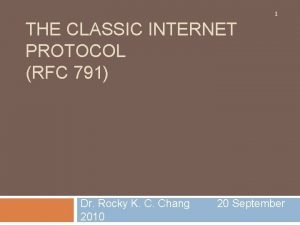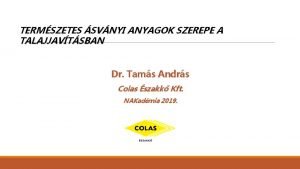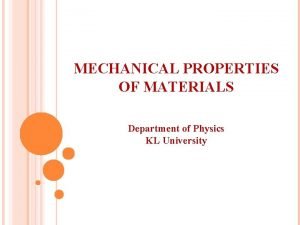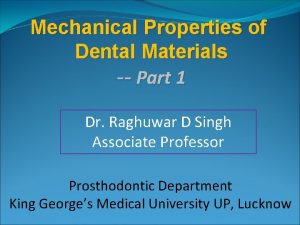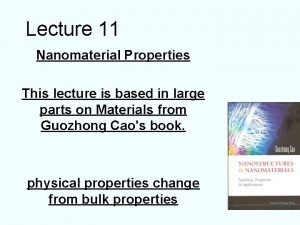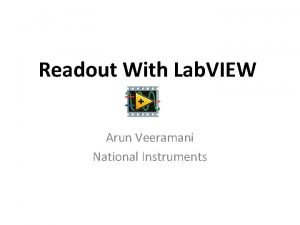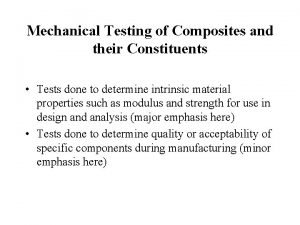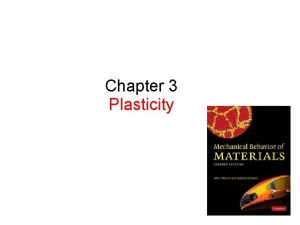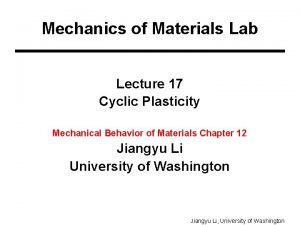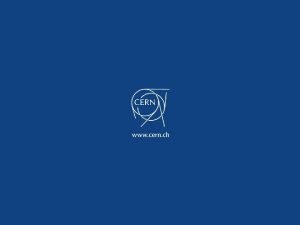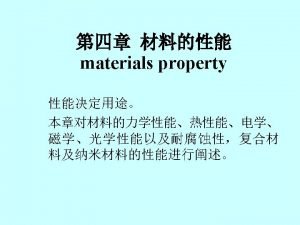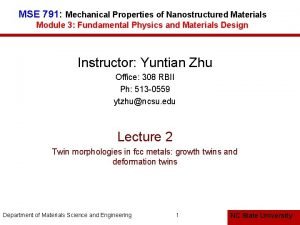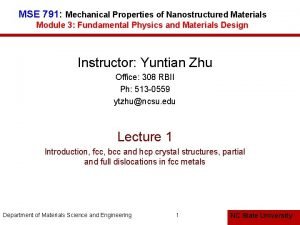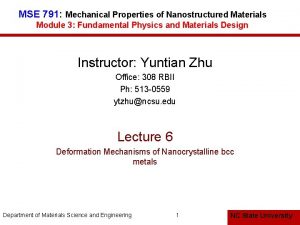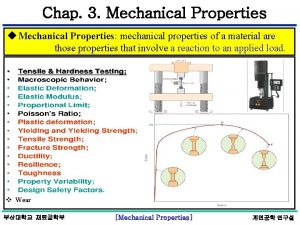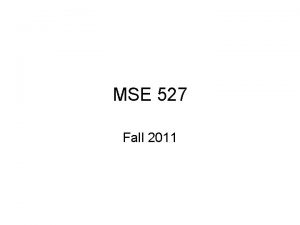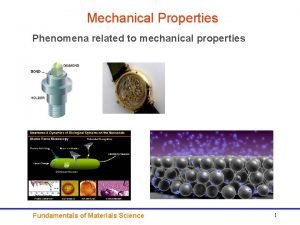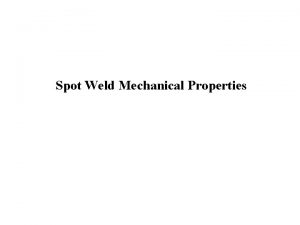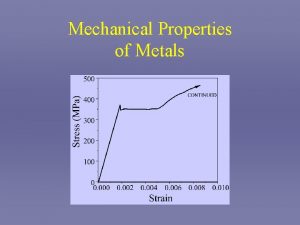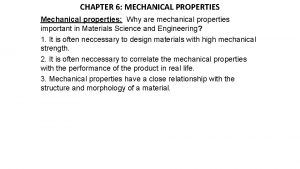MSE 791 Mechanical Properties of Nanostructured Materials Module















- Slides: 15

MSE 791: Mechanical Properties of Nanostructured Materials Module 3: Fundamental Physics and Materials Design Instructor: Yuntian Zhu Office: 308 RBII Ph: 513 -0559 ytzhu@ncsu. edu Lecture 3 Difference in the deformation of coarse-grained and nano grains Department of Materials Science and Engineering 1 NC State University

Dislocation source in coarse-grained metals: Frank-Read source F = t b https: //www. youtube. com/watch? v=5 y. ID 78 ovc. X 8 Department of Materials Science and Engineering 2 NC State University

Twinning mechanisms in CG metal: Pole mechanism Due to the screw dislocation, the partial moves to the next slip plane after rotating around the screw for 360 o Other mechanisms: • 3 layer twinning: Mahajan & Chen, Acta Metall. 21, 1353 (1973). • Prismatic Glide mechanism: Venables, Phil. Mag. 6, 379 (1961) • Double pole mechanism: Niewczas & Saada, Phil. Mag. 82, 167(2002). Department of Materials Science and Engineering 3 NC State University

Nanocrystalline grains often are dislocation free Dislocation and microstructure variation with grain size in Ti Department of Materials Science and Engineering 4 NC State University

What Do We Know about Deformation Physics in Nanomaterials? Grain rotation and grain boundary sliding at finest grain size (e. g. <10 nm) Molecular Dynamics simulations Swygenhoven et al, Phys. Rev. B, 60, 22 (1999). Schiotz et al, Nature, 391, 561 (1998). Yamakov et al, Nature Materials, 3, 43 (2004). Experimental Evidence Shan et al, Science, 305, 654 (2004). Ke et al, Nanostructured Materials, 5, 689 (1995). Liao et al, Appl. Phys. Lett. 88, 021909 (2006 ), our own work NC State University

At a few tens nanometers, partial dislocation emission and deformation twinning dominate Molecular Dynamics simulations Swygenhoven, Schiotz Science, 296, 66 (2002). et al, Nature, 391, 561 (2002) Yamakov et al, Nature Materials, 1, 43 (2002). • Partial dislocations emitted from grain boundaries • 3 deformation twinning mechanisms in nano Al NC State University

Our experimental work provides first and direct experimental evidence to support the MD simulation results in nanomaterials Nano Cu Twinning mechanisms 1: homogeneous twinning inside a nano Al grain Partials emission from grain boundaries and twinning Appl. Phys. Lett. 83, 632 (2003) Appl. Phys. Lett. 84, 592 (2004) NC State University

Twinning mechanisms 2 in nanomateials: twinning by partials from grain boundaries Nano-Al film/indented Cryo-milled nano-Al powder Chen et al, Science, 300, 1275 (2003). Twin formed by successive partial dislocation emission from a grain boundary Appl. Phys. Lett. 83, 5062 (2003). NC State University

Twinning mechanisms 3 in nanomaterials: Grain boundary splitting/migration MD simulation Yamakov et al, Nature Materials, 1, 45 (2002). Appl. Phys. Lett. 83, 5062 (2003) NC State University

Fivefold Twins in nanomaterials HPTed Cu (RT) Five-fold twins were usually grown in nano-particles obtained by vapor deposition, electrodeposition, etc This five-fold twin was formed via a sequential twinning by partials emitted from grain/twin boundaries Appl. Phys. Lett. 84, 592 (2004). NC State University

Partials Multiply at Grain Boundary to Form a Twin (nanomaterials) • One partial is needed on each plane to form a twin • It is statistically impossible to have a partial on each plane Zhu, Wu, Liao, et al, APL, . 95, 031909 (2009). NC State University

Partial dislocations on the grain boundary Non-equilibrium grain boundaries GPFE curves are not applicable to nanomaterials with non-equilibrium grain boundaries Wu, Zhu, APL, 89, 03122 (2006). Our work Huang, Zhu, Jiang, Lowe, Acta Mat, 49, 1497 (2001). Department of Materials Science and Engineering 12 NC State University

Mechanism for Partial to Multiply on Grain Boundary b b 1 + b 2 glide out, b 1 cross slip to the next plane b 1 b + (-b 2) -b 2 stays on the grain boundary and b repeats the above process Appl. Phys. Lett. 95, 031909 (2009). NC State University

Mechanism for Partial to Multiply on Grain Boundary b b 1 + b 2 glide out, b 1 cross slip to the next plane b 1 + b’ + (-b 3) -b 3 stays on the grain boundary b’ dissociates b’ b 1 + b 3 glide out, b 1 cross slip to the next plane b 1 + b + (-b 2) b 2 and b 3 are emitted alternatively b 2 + b 3 b 1 NC State University

Homework (due in one week) • Lecture 3: 5, 8 Department of Materials Science and Engineering 15 NC State University
 A word 791
A word 791 Rfc 791
Rfc 791 791-179-455
791-179-455 Lateral strain definition
Lateral strain definition Stress strain curve toughness
Stress strain curve toughness Mechanical properties of nano materials
Mechanical properties of nano materials Actual mechanical advantage vs ideal mechanical advantage
Actual mechanical advantage vs ideal mechanical advantage Mechanical components kit for flexrio module development
Mechanical components kit for flexrio module development C device module module 1
C device module module 1 Mechanical materials
Mechanical materials Strength of materials
Strength of materials Mechanical behavior of materials
Mechanical behavior of materials Mechanical behavior of materials
Mechanical behavior of materials Mechanical of materials
Mechanical of materials Stress curve and phases
Stress curve and phases Go noodle cant stop the feeling
Go noodle cant stop the feeling

